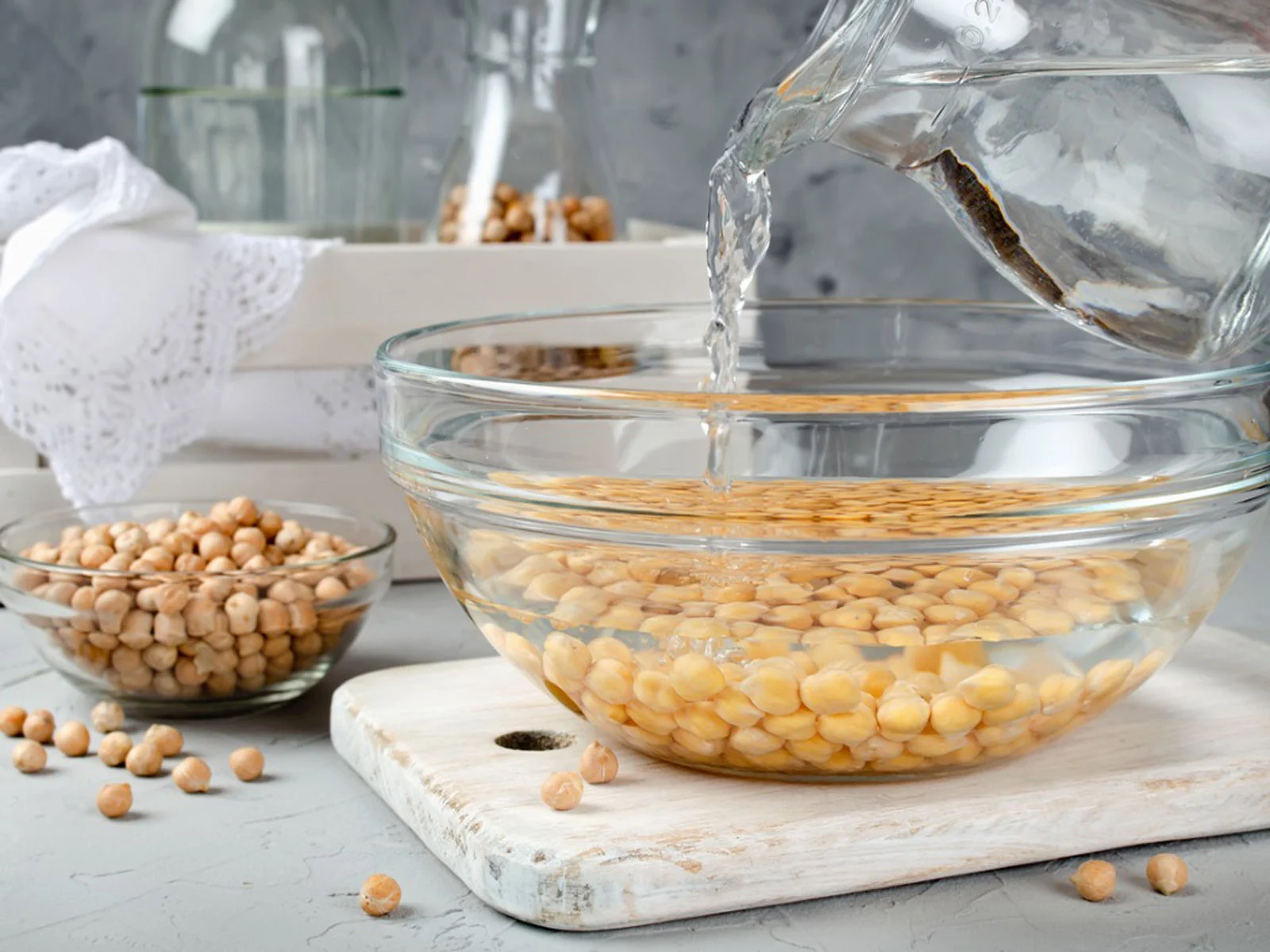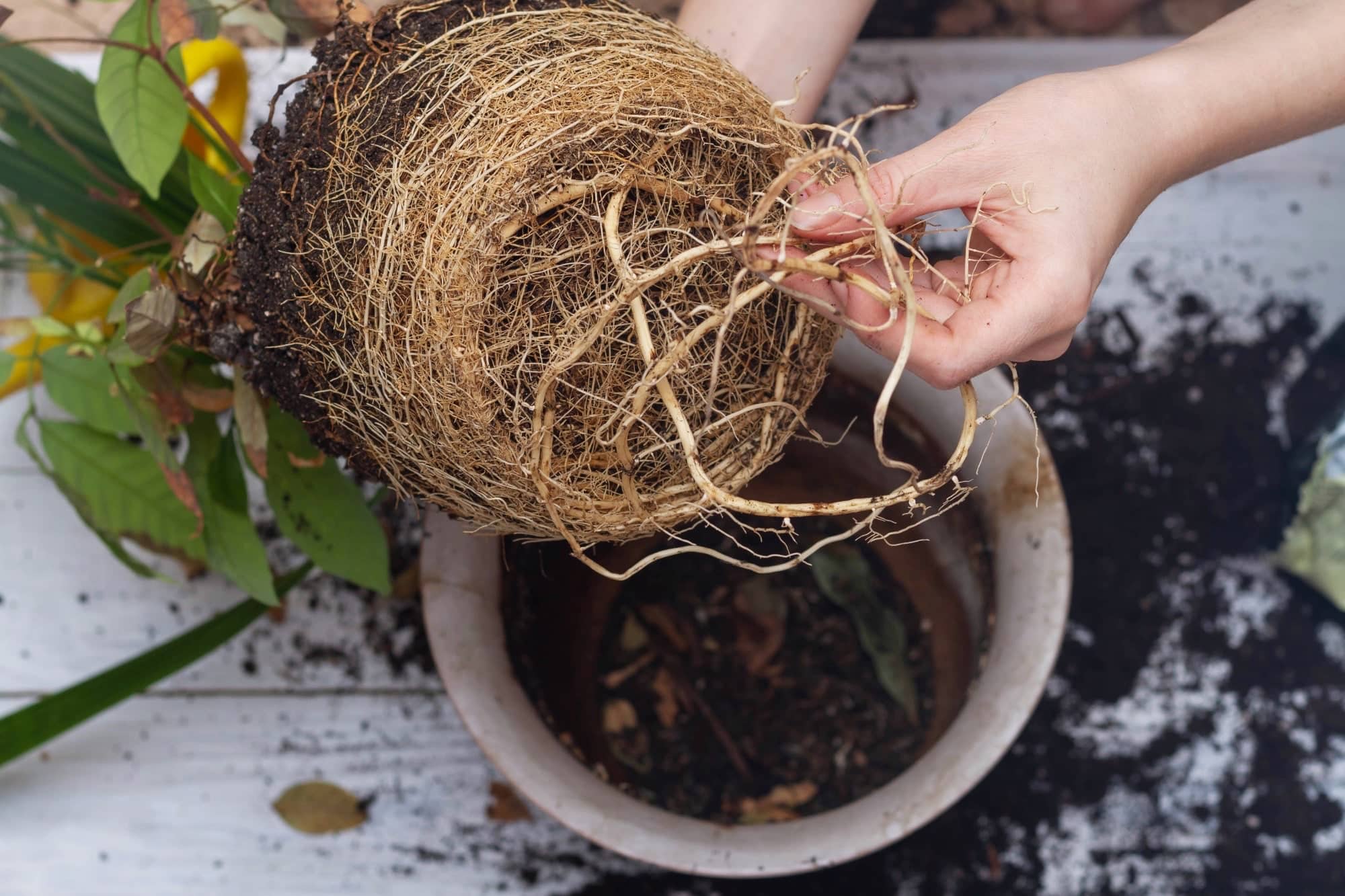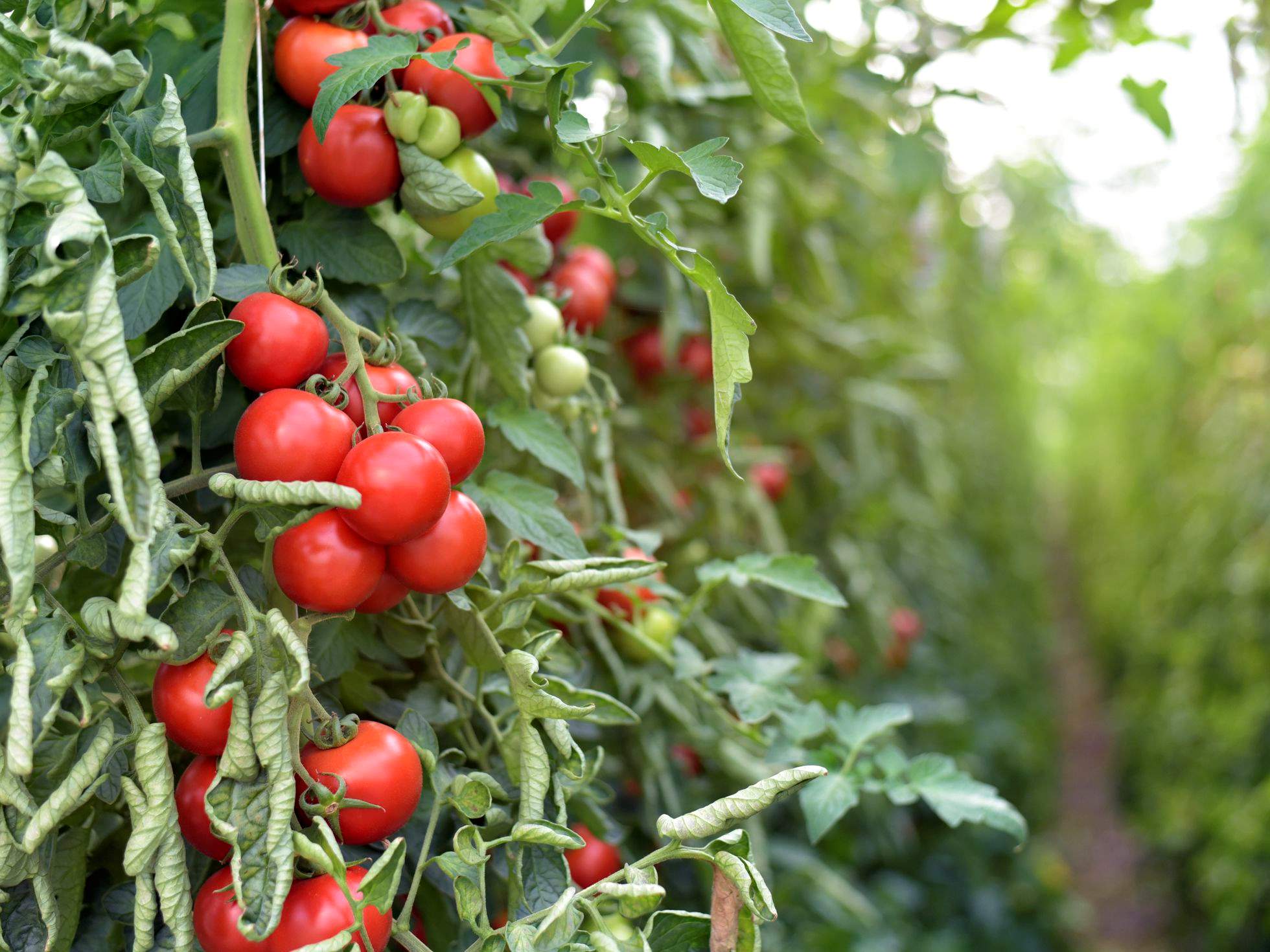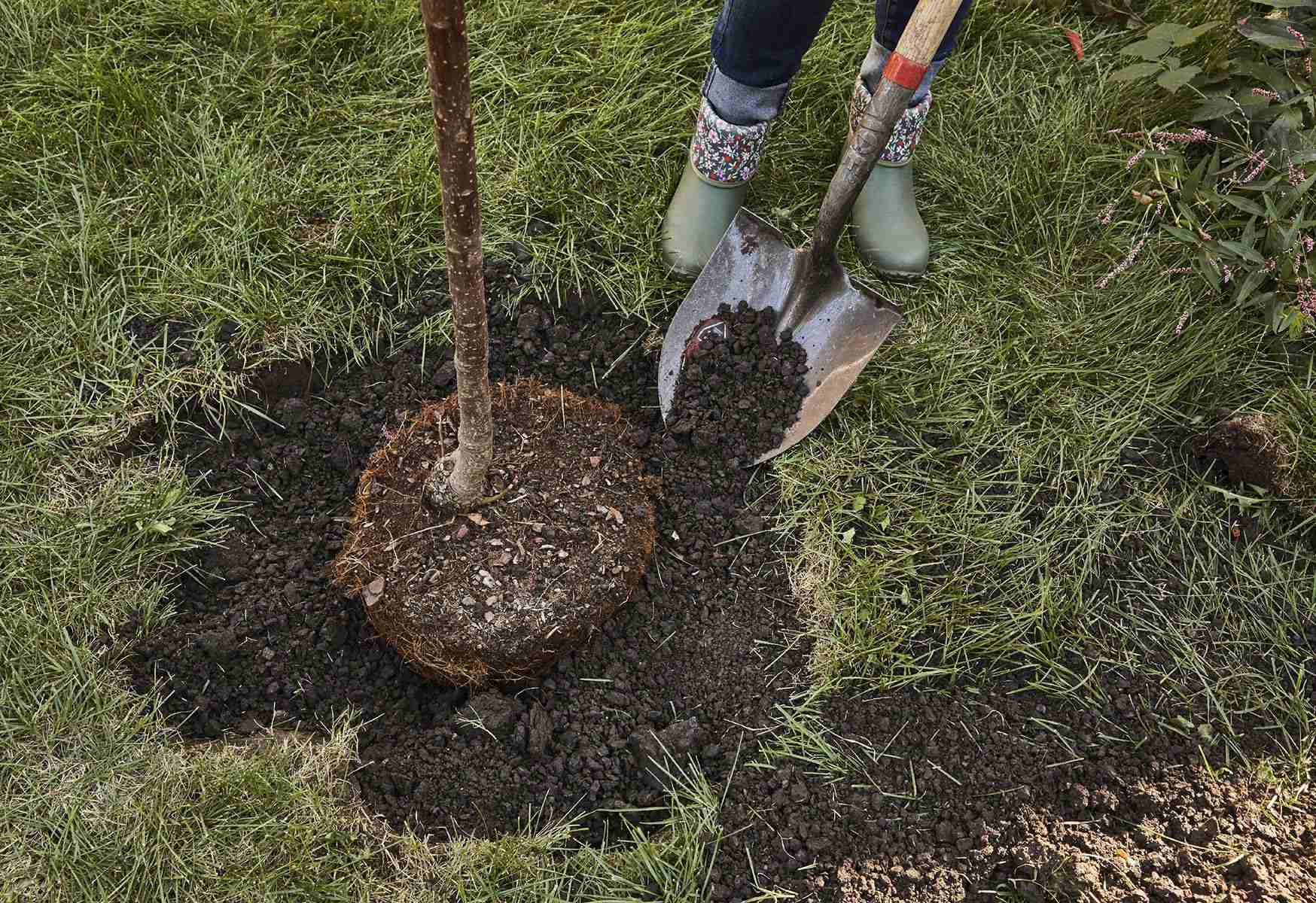Home>Types of Gardening>Edible Gardening>When Should You Plant Tomato Seeds
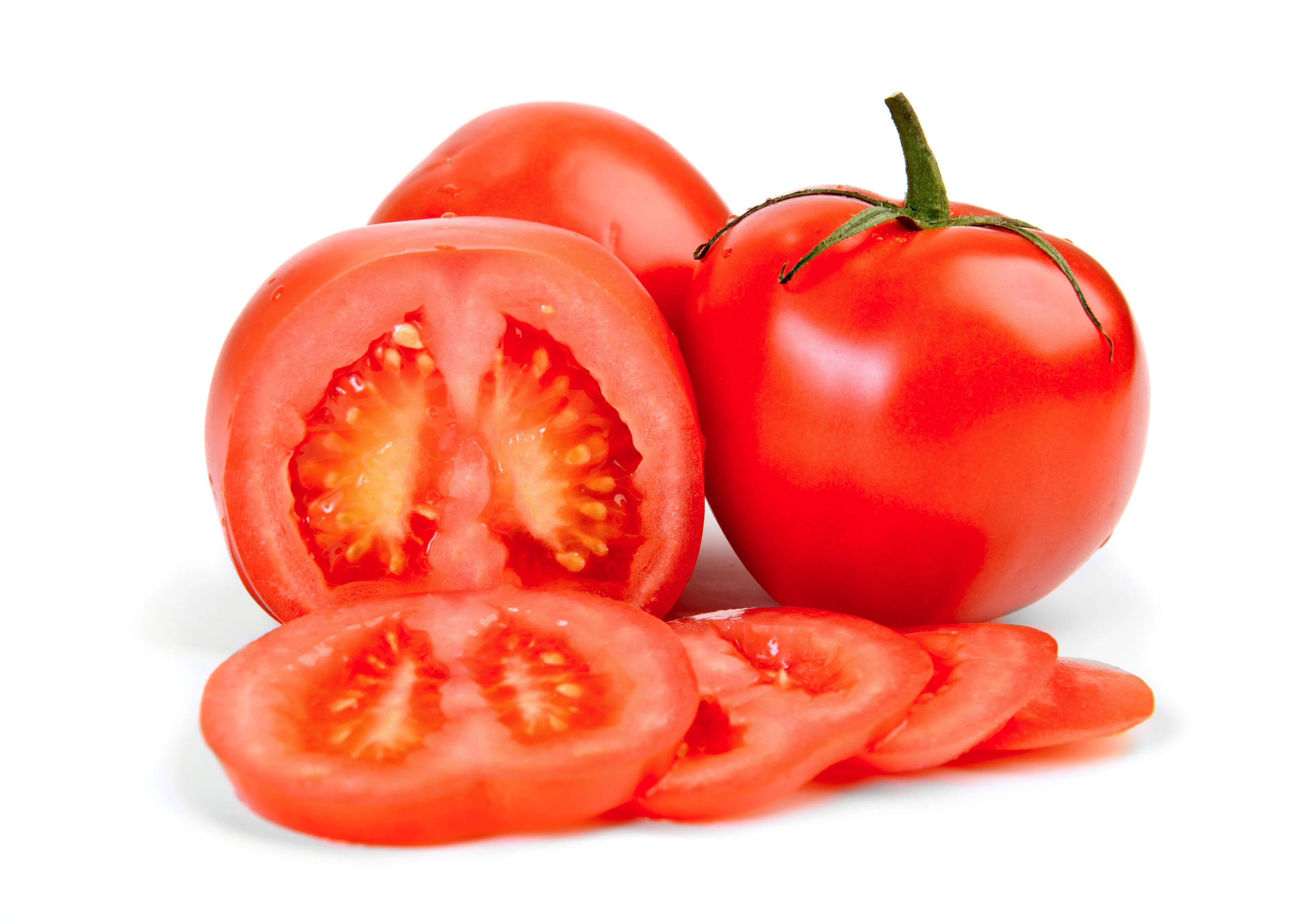

Edible Gardening
When Should You Plant Tomato Seeds
Modified: February 9, 2024
Learn the best times to plant tomato seeds in your edible gardening journey. Discover tips and tricks for successful tomato cultivation.
(Many of the links in this article redirect to a specific reviewed product. Your purchase of these products through affiliate links helps to generate commission for Chicagolandgardening.com, at no extra cost. Learn more)
Table of Contents
- Introduction
- Factors to Consider Before Planting Tomato Seeds
- Climate and Temperature Requirements
- Time of Year for Planting Tomato Seeds
- Soil Preparation for Tomato Seeds
- Choosing the Right Tomato Varieties
- Starting Tomato Seeds Indoors
- Directly Sowing Tomato Seeds in the Garden
- Caring for Tomato Seedlings
- Transplanting Tomato Seedlings
- Final Thoughts on Planting Tomato Seeds
Introduction
Welcome to the wonderful world of edible gardening! If you have a green thumb and a passion for growing your own food, then you’re in for a treat. One of the most popular and rewarding plants to grow in a garden is the tomato. Nothing beats the taste of a fresh, juicy tomato that you picked from your own backyard.
Before you dive into the exciting process of planting tomatoes, it’s important to understand when and how to properly plant tomato seeds. Timing is crucial, as tomatoes are sensitive to temperature and require specific conditions to thrive. By taking the time to plan and prepare, you’ll set yourself up for a successful harvest.
In this article, we will explore the factors to consider before planting tomato seeds, including climate and temperature requirements, the best time of year for planting, soil preparation, and choosing the right tomato varieties. We will also discuss the two methods of starting tomato seeds – indoors and directly in the garden – as well as provide tips on caring for tomato seedlings and transplanting them to their permanent home.
So grab your gardening gloves and let’s get started on the journey to growing your own delicious tomatoes!
Factors to Consider Before Planting Tomato Seeds
Before you start planting tomato seeds, there are a few important factors to consider to ensure the success of your crop. Let’s take a closer look at these factors:
Climate and Temperature Requirements
Tomatoes are warm-season plants that thrive in temperatures between 70-85°F (21-29°C). They require at least 6-8 hours of direct sunlight each day. It’s crucial to select tomato varieties that are well-suited for your particular climate. Some varieties are better adapted to cooler temperatures, while others are bred for hot and humid conditions.
Time of Year for Planting Tomato Seeds
Timing is critical when it comes to planting tomato seeds. In most regions, it’s best to start your seeds indoors 6-8 weeks before the last expected frost date. This allows the seeds to germinate and grow into healthy seedlings before they are transplanted into the garden. If you live in a warm climate, you may be able to start your seeds directly in the garden a few weeks earlier.
When choosing the right time to plant, keep in mind that temperatures below 50°F (10°C) can stunt the growth of tomato plants or even kill them. Similarly, extremely hot temperatures above 95°F (35°C) can cause flowers to drop and decrease fruit set. Aim for a balance in temperature and avoid extreme weather conditions.
Soil Preparation for Tomato Seeds
Tomatoes prefer well-drained soil that is rich in organic matter. Before planting, prepare the soil by removing any weeds, rocks, or debris. Amend the soil with compost, aged manure, or a balanced organic fertilizer to provide essential nutrients. It’s also beneficial to conduct a soil test to check the pH level and make any necessary adjustments. Tomatoes thrive in slightly acidic soil with a pH level around 6.0-6.8.
Ensure that the soil is crumbly and loose to allow for easy root penetration and water drainage. Raised beds or containers can be a good option if you have heavy clay soil or limited garden space.
Choosing the Right Tomato Varieties
With thousands of tomato varieties available, it can be overwhelming to choose the right one for your garden. Consider factors such as size, shape, color, flavor, disease resistance, and growth habit. Determinate varieties are compact and bushy, making them suitable for container gardening or smaller spaces. Indeterminate varieties are vining and require staking or trellising for support.
Additionally, take into account the average number of days to maturity. This is important if you have a shorter growing season or want an earlier harvest. Look for varieties labeled as “early” or “quick maturing” if you’re in a colder climate or want to extend your harvest season.
By considering these factors, you’ll be well-prepared to start your journey of successfully growing and enjoying delicious tomatoes in your own backyard.
Climate and Temperature Requirements
Understanding the climate and temperature requirements for growing tomatoes is essential for a successful harvest. Tomatoes are warm-season plants that thrive in temperatures between 70-85°F (21-29°C). They are highly sensitive to cold and frost, which can damage or even kill the plants.
Tomatoes require at least 6-8 hours of direct sunlight each day to ensure proper growth and fruit development. Adequate sunlight helps in photosynthesis, the process by which plants convert sunlight into energy and nutrients.
When selecting tomato varieties, it is important to consider your specific climate. Some varieties are better suited for cooler temperatures, while others are bred to tolerate hot and humid conditions. Determinate varieties, which are often more compact and bushy, tend to handle heat better than indeterminate varieties.
In cooler climates, start your tomato seeds indoors 6-8 weeks before the last expected frost date. This allows the seeds to germinate and grow into healthy seedlings before they are transplanted outside. To protect the young plants from cold temperatures, consider using row covers, cloches, or a greenhouse until the threat of frost has passed.
If you live in a warmer climate, you may be able to sow tomato seeds directly in the garden. However, it is still important to wait until the soil has warmed up sufficiently. Cold soil can hinder germination and slow down the growth of seedlings.
Extreme temperatures, both hot and cold, can impact the production of tomatoes. When temperatures drop below 50°F (10°C), the plants may stop growing, and their leaves can turn yellow. When exposed to temperatures above 95°F (35°C), tomato plants may experience blossom drop, where flowers fail to set fruit. If your area regularly experiences such extreme temperatures, consider providing shade during the hottest part of the day or using shade cloth to protect the plants.
To maintain consistent soil temperatures, consider using mulch around the base of your tomato plants. Organic mulches, such as straw or wood chips, help insulate the soil, retain moisture, and prevent temperature fluctuations.
By understanding and providing the right climate and temperature conditions for your tomato plants, you can maximize their growth, health, and productivity.
Time of Year for Planting Tomato Seeds
Timing is crucial when it comes to planting tomato seeds, as they require specific conditions to germinate and grow successfully. The ideal time to start tomato seeds depends on your location and the expected last frost date in your area.
In most regions, it is recommended to start tomato seeds indoors 6-8 weeks before the last expected frost date. This timing ensures that the seedlings have enough time to grow and develop before being transplanted into the garden.
To determine the last expected frost date, you can refer to local gardening resources, extension offices, or online tools specific to your region. Keep in mind that these dates are estimates, and weather patterns can vary from year to year. It’s always a good idea to monitor local weather forecasts and adjust your planting schedule accordingly.
If you live in a warmer climate with mild winters, you may have the option of starting tomato seeds directly in the garden a few weeks earlier. In these regions, the soil and air temperatures remain consistently warm, providing favorable conditions for germination and growth.
When starting tomato seeds indoors, use seed starting trays or pots filled with a sterile soilless mix. Sow the seeds ¼ inch deep and keep them consistently moist. Place the trays in a warm location, such as near a south-facing window or under grow lights. Ensure that the temperature remains around 70-75°F (21-24°C) for optimal germination.
As the seedlings grow, provide them with adequate light to prevent them from becoming leggy. Consider using supplemental grow lights if natural light is limited. Maintain consistent moisture levels by watering when the soil feels dry to the touch.
Before transplanting the seedlings outdoors, gradually acclimate them to outdoor conditions. This process, known as hardening off, helps the seedlings adjust to fluctuations in temperature, wind, and sunlight. Start by placing them outside in a sheltered location for a few hours each day, gradually increasing the amount of time over the course of a week.
When transplanting the tomato seedlings into the garden, choose a sunny location with well-draining soil. Space them according to the recommended spacing for the specific variety you are growing. Provide support, such as stakes or cages, to help the plants grow upright and prevent the fruits from touching the ground.
By understanding the timing for planting tomato seeds and providing the necessary care, you can kick-start your growing season and enjoy a bountiful harvest of fresh, homegrown tomatoes.
Soil Preparation for Tomato Seeds
Preparing the soil is a crucial step in ensuring the success of your tomato seeds. Healthy soil provides the necessary nutrients, drainage, and structure for the plants to thrive. Here are some key steps to follow when preparing the soil for planting tomato seeds:
1. Clear the Area
Start by clearing the area of any debris, weeds, or rocks. Remove any perennial weeds by their roots to prevent them from competing with your tomato plants for nutrients and water.
2. Amend the Soil
Tomatoes prefer well-draining soil that is rich in organic matter. Incorporate compost, aged manure, or a balanced organic fertilizer into the soil. These organic amendments improve soil structure, enhance nutrient availability, and promote beneficial microbial activity.
Avoid using fresh manure or high-nitrogen fertilizers, as they can burn the young tomato plants or contribute to excessive foliage growth at the expense of fruit production.
3. Conduct a Soil Test
It’s a good idea to conduct a soil test to determine the pH level and nutrient content of your soil. Tomatoes thrive in slightly acidic soil, with a pH level between 6.0 and 6.8. If the pH is too low, you can add lime to raise it, while sulfur can be added to lower a high pH.
If the soil test indicates deficiencies in essential nutrients, you can adjust the fertility by adding organic fertilizers or specific mineral amendments as recommended by the test results.
4. Improve Drainage
To ensure proper drainage, amend heavy clay soils with organic matter, such as compost or well-rotted manure. This helps loosen the soil, allowing for better water penetration and root growth.
If you have poorly drained soil, consider planting your tomatoes in raised beds to improve drainage. Raised beds also warm up more quickly in the spring, helping the plants establish and grow faster.
5. Mulch the Soil
Apply a layer of organic mulch around the base of the tomato plants after planting. Mulching helps conserve moisture, suppresses weeds, and regulates soil temperature. Organic mulches, such as straw or wood chips, also contribute to the long-term improvement of soil fertility as they break down over time.
Remember to replenish the mulch as needed throughout the growing season to maintain a consistent layer.
By taking the time to prepare the soil before planting your tomato seeds, you create a favorable growing environment for your plants. This sets the stage for healthy, productive plants and a bountiful harvest of delicious tomatoes.
Choosing the Right Tomato Varieties
Choosing the right tomato varieties is an important step in planning your edible garden. With thousands of varieties to choose from, each offering its own unique characteristics, it’s important to consider your specific needs and preferences. Here are some factors to consider when selecting tomato varieties:
1. Size and Shape
Think about what you want to use your tomatoes for. If you enjoy snacking on cherry tomatoes straight from the vine, consider indeterminate cherry tomato varieties. If you’re looking for slicing tomatoes for sandwiches or salads, opt for larger varieties like Beefsteak or Brandywine.
Additionally, there are plum or paste tomatoes, which are perfect for making sauces, and roma tomatoes, which are firm and ideal for canning.
2. Flavor Profile
Tomatoes come in a wide range of flavors, from sweet and mild to tangy and acidic. Consider your taste preferences and the intended use of the tomatoes. Some varieties are known for their exceptional sweetness, while others have a more complex flavor profile.
If you’re unsure, try growing a variety of tomatoes to experience the different flavor profiles and find your favorites.
3. Disease Resistance
Tomatoes can be susceptible to various diseases, such as early blight, late blight, and verticillium wilt. Consider choosing varieties that have known resistance or tolerance to common diseases in your area. This can help reduce the risk of plant loss and the need for pesticide applications.
4. Growth Habit
Tomato plants can have either determinate or indeterminate growth habits. Determinate varieties tend to be more compact and bushy, making them well-suited for container gardening or smaller spaces. Indeterminate varieties, on the other hand, are vining plants that continue to grow and produce fruit throughout the growing season. These varieties require support, such as stakes or trellises, to keep them off the ground.
5. Maturity Dates
The number of days to maturity is also an important consideration, especially for regions with shorter growing seasons. Look for varieties that are labeled as “early” or “quick maturing” if you want to ensure a timely harvest or extend your growing season.
By considering these factors, you can choose tomato varieties that are well-suited to your garden and culinary preferences. Experiment with different varieties each season to discover new favorites and enjoy a diverse selection of homegrown tomatoes.
Starting Tomato Seeds Indoors
Starting tomato seeds indoors is a great way to get a head start on the growing season and ensure healthy and robust plants. By providing controlled conditions indoors, you can optimize germination and early growth. Here are the steps to successfully start tomato seeds indoors:
1. Gather Supplies
Collect the necessary supplies, including seed starting trays or pots, a sterile soilless mix, seeds, labels, and a watering can or spray bottle. Use trays with drainage holes to prevent the accumulation of excess water.
2. Sow the Seeds
Firmly fill the trays or pots with the soilless mix, leaving a ¼ inch of space at the top. Moisten the soil with water until it is evenly moist, but not waterlogged. Sow the tomato seeds about ¼ inch deep, and lightly cover them with soil. Space the seeds according to the recommended spacing for the specific variety.
3. Provide Optimal Conditions
Place the trays or pots in a warm location with indirect sunlight, such as near a south-facing window or under grow lights. Ensure the temperature remains around 70-75°F (21-24°C) for optimal germination. You can use a heating mat to maintain consistent warmth if necessary.
4. Water and Maintain Moisture
Keep the soil evenly moist, but avoid overwatering, as excessive moisture can lead to fungal diseases and root rot. Use a watering can with a fine rose or a spray bottle to mist the soil gently. Monitor the moisture level regularly and water as needed.
5. Provide Adequate Light
As the seedlings emerge, they need adequate light to prevent them from becoming leggy or stretching towards the light source. If natural light is limited, supplement with fluorescent or LED grow lights. Position the lights a few inches above the seedlings and adjust their height as the plants grow.
6. Transplant seedlings
Once the seedlings have developed their first true leaves and are a few inches tall, they are ready to be transplanted into larger pots. Be careful when handling the delicate seedlings, holding them by the leaves to avoid damaging the stem. Transplant the seedlings into larger containers filled with potting soil, burying them up to their first leaves.
By starting tomato seeds indoors, you give your plants a head start and increase your chances of a successful harvest. It also allows you to experiment with a wider variety of tomato cultivars and extend your growing season. With proper care and attention, your indoor-grown seedlings will be ready to transplant into the garden once the outdoor conditions are favorable.
Directly Sowing Tomato Seeds in the Garden
If you live in a region with a longer growing season or mild winters, you have the option to directly sow tomato seeds in the garden. Direct sowing can be a convenient and straightforward method, especially for gardeners who prefer not to start seeds indoors. Here are the steps to successfully sow tomato seeds directly in the garden:
1. Select a Suitable Location
Choose a spot in your garden that receives full sun for at least 6-8 hours a day. Ensure that the soil is well-draining and has been amended with organic matter to improve its fertility and structure.
2. Prepare the Soil
Clear the area of any weeds, rocks, or debris. Loosen the soil with a garden fork or tiller to a depth of about 6-8 inches. Remove any large clumps or stones and break up compacted soil.
3. Sow the Seeds
Follow the packet instructions for seed spacing and planting depth. Typically, tomato seeds are sown at a depth of ¼ inch. Space the seeds according to the recommended spacing for the specific variety, usually a few inches apart. Create small furrows or holes in the soil using a dibber or the end of a gardening tool.
4. Cover and Water
Cover the seeds with soil and lightly firm it down to ensure good seed-to-soil contact. Water the area gently to settle the soil and provide moisture for germination. Be careful not to oversaturate the soil, as it can lead to rotting or poor germination.
5. Provide Care and Maintenance
Keep the soil consistently moist but not waterlogged during the germination and early seedling growth stages. As the seedlings emerge, thin them out if necessary, leaving the strongest and healthiest plants with adequate spacing for proper growth.
6. Mulch and Stake
Once the seedlings have grown a few inches tall, apply a layer of organic mulch around the plants to help retain moisture, suppress weeds, and regulate soil temperature. Consider using stakes or cages to provide support for the growing plants as they develop.
7. Monitor and Protect
Regularly monitor the plants for pests or diseases and take appropriate measures to control them. Keep an eye on the soil moisture and water as needed, especially during dry periods. Stay vigilant for signs of nutrient deficiencies and address them with appropriate fertilization.
Directly sowing tomato seeds in the garden can be a rewarding experience, allowing you to observe the entire lifecycle of the plants. With proper care and maintenance, your tomato seeds will germinate and grow into healthy plants that will reward you with a bountiful harvest of fresh, homegrown tomatoes.
Caring for Tomato Seedlings
Once your tomato seedlings have emerged and started to grow, it’s important to provide them with proper care and attention to ensure healthy development. Here are some essential tips for caring for your tomato seedlings:
1. Watering
Consistent and adequate watering is crucial for the healthy growth of tomato seedlings. Keep the soil evenly moist, but be careful not to overwater as this can lead to root rot. Water the seedlings at the base, aiming to keep the foliage dry to prevent fungal diseases. Watering in the morning allows the foliage to dry throughout the day.
2. Fertilizing
Provide your tomato seedlings with regular feeding to supply essential nutrients. Start fertilizing once the seedlings have developed their first true leaves. Use a balanced organic fertilizer or a diluted liquid fertilizer according to the package instructions. Avoid over-fertilizing, as this can result in excessive foliage growth and reduced fruit production.
3. Thin out and Prune
If your tomato seedlings are crowded, thin them out to provide adequate spacing between plants. This allows for better air circulation, reducing the risk of diseases. You can either transplant the excess seedlings to other pots or discard them. Pruning the lower leaves of the seedlings can also help improve air circulation and reduce the chance of soil-borne diseases.
4. Provide Support
As the tomato seedlings grow taller, provide them with support to prevent the plants from toppling over and the fruits from touching the ground. Staking or caging the plants helps maintain an upright position and improves air circulation. Use soft ties or twine to secure the plants to the support structure, being careful not to constrict the stems.
5. Monitor for Pests and Diseases
Regularly inspect your tomato seedlings for any signs of pests or diseases. Common pests that affect tomatoes include aphids, caterpillars, and spider mites. If you notice any pest infestations, choose environmentally friendly pest control methods to address the issue. Keep an eye out for signs of diseases such as early blight or powdery mildew, and promptly treat affected plants with organic fungicides or other appropriate measures.
6. Hardening Off
Before transplanting your tomato seedlings into the garden, it’s important to gradually acclimate them to outdoor conditions. This process, known as hardening off, helps the seedlings adjust to fluctuations in temperature, sunlight, and wind. Start by placing the seedlings outdoors in a sheltered location for a few hours each day, gradually increasing the amount of time over the course of a week. Ensure the seedlings are protected from harsh sun or strong winds during this period.
By providing proper care and attention, your tomato seedlings will grow into healthy, strong plants that can thrive in the garden and produce an abundant harvest of delicious tomatoes.
Transplanting Tomato Seedlings
Transplanting tomato seedlings from their indoor containers to the garden is a critical step in their growth process. When performed properly, it promotes healthy root development, ensures optimal growing conditions, and ultimately leads to a successful harvest. Here’s a step-by-step guide to transplanting tomato seedlings:
1. Choose the Right Timing
Transplant your tomato seedlings outdoors when all chances of frost have passed, and the soil has warmed up. Typically, this is a few weeks after the last expected frost date for your area. Tomatoes thrive in warm soil, so waiting until the soil temperature reaches around 60°F (15°C) is ideal.
2. Prepare the Planting Holes
Before transplanting, prepare the planting holes in the garden. Dig the holes slightly larger than the root ball of the seedlings, ensuring they are spaced according to the recommended spacing for the specific variety. The holes should be deep enough to bury the seedlings up to their first set of true leaves.
3. Harden Off the Seedlings
If you have been growing your tomato seedlings indoors, it’s crucial to gradually acclimate them to outdoor conditions. Over the course of about a week, expose the seedlings to increasing amounts of outdoor sunlight, wind, and temperature changes. Start by placing them outside in a sheltered area for a couple of hours and gradually extend the time each day.
4. Transplant Carefully
Carefully remove the seedlings from their containers, holding them by the leaves to avoid damaging the delicate stems. Gently loosen the roots if they appear congested or tangled. Place each seedling into a prepared hole and bury it up to its first set of true leaves. Firmly press the soil around the base of the seedling to ensure good contact with the roots.
5. Provide Support and Water
Immediately after transplanting, provide support for the young tomato seedlings, especially if they are indeterminate varieties. Install stakes, cages, or trellises near the plants, being careful not to damage the roots. Water generously to settle the soil and ensure that the seedlings have adequate moisture for their initial establishment.
6. Maintain Care
Keep a close eye on the transplanted tomato seedlings and provide ongoing care. Water consistently to keep the soil evenly moist, and adjust the watering frequency according to the weather conditions. Monitor for pests or diseases and take appropriate action if necessary. Regularly remove any suckers or excessive foliage to promote airflow and redirect energy towards fruit production.
By following these steps and providing proper care, your transplanted tomato seedlings will establish well in the garden and continue to grow into healthy, productive plants. Soon enough, you’ll be enjoying the bountiful harvest of homegrown, flavorful tomatoes.
Final Thoughts on Planting Tomato Seeds
Planting tomato seeds and nurturing them into flourishing plants is a rewarding process that allows you to enjoy the flavors of freshly harvested tomatoes. As you embark on your journey of growing tomatoes, here are some final thoughts to consider:
Patience and Care
Tomatoes require patience and consistent care. From carefully selecting the varieties to providing the right growing conditions, the effort you put in will contribute to the success of your tomato plants. Keep in mind that it may take some time for the seedlings to establish, flower, and bear fruit, but with proper care, the reward will be well worth it.
Adaptability to Your Region
Pay attention to the specific climate and growing conditions in your region. Choose tomato varieties that are well-suited to your local climate and can thrive in your specific garden environment. Consider factors such as temperature tolerance, disease resistance, and maturity dates to enhance your chances of a successful harvest.
Experiment and Learn
Don’t be afraid to experiment with different tomato varieties each season. This not only adds variety to your garden but also allows you to learn and discover your favorite types of tomatoes. Observe how different varieties grow, taste, and perform in your garden, and use this knowledge to refine your choices in future seasons.
Crop Rotation
Rotate your tomato plants annually to prevent the build-up of soilborne diseases and pests. Avoid planting tomatoes or other related plants, such as peppers or eggplants, in the same spot in the garden for consecutive years. Rotate them with unrelated plants to maintain the health of your garden and minimize potential problems.
Enjoy the Journey
Remember, gardening is not just about the end result but also the joy of the process. Embrace the experience of planting, nurturing, and harvesting your tomato plants. Take the time to appreciate the beauty of the plants, the fresh scent of the leaves, and the satisfaction of seeing your hard work come to fruition in a basket of homegrown tomatoes.
By following these considerations and nurturing your tomato plants with care, you can enjoy a fruitful and satisfying growing season. Whether you choose to start your tomato seeds indoors or sow them directly in the garden, the journey of cultivating your own tomatoes is filled with learning, excitement, and the flavorful rewards of homegrown produce.



